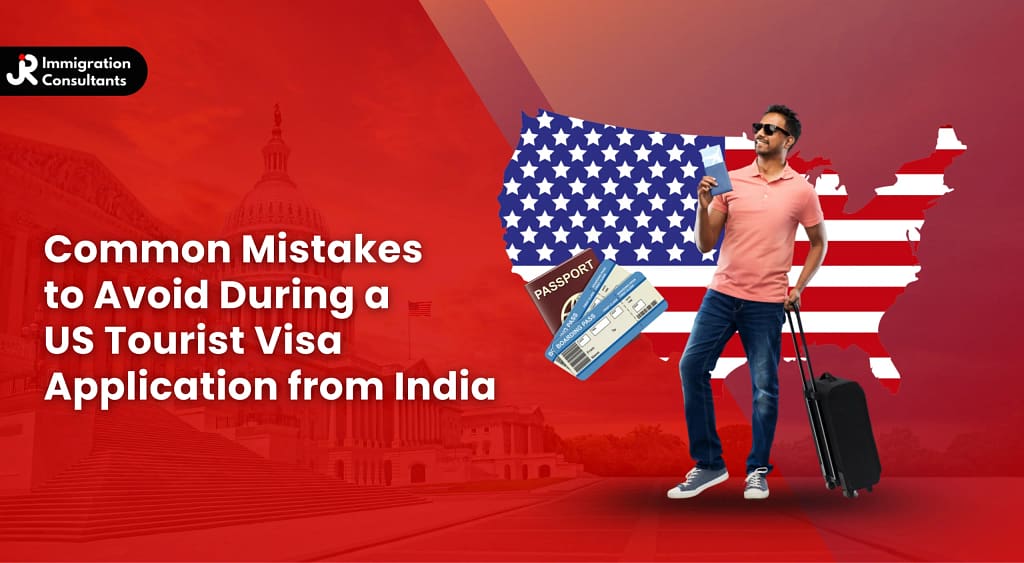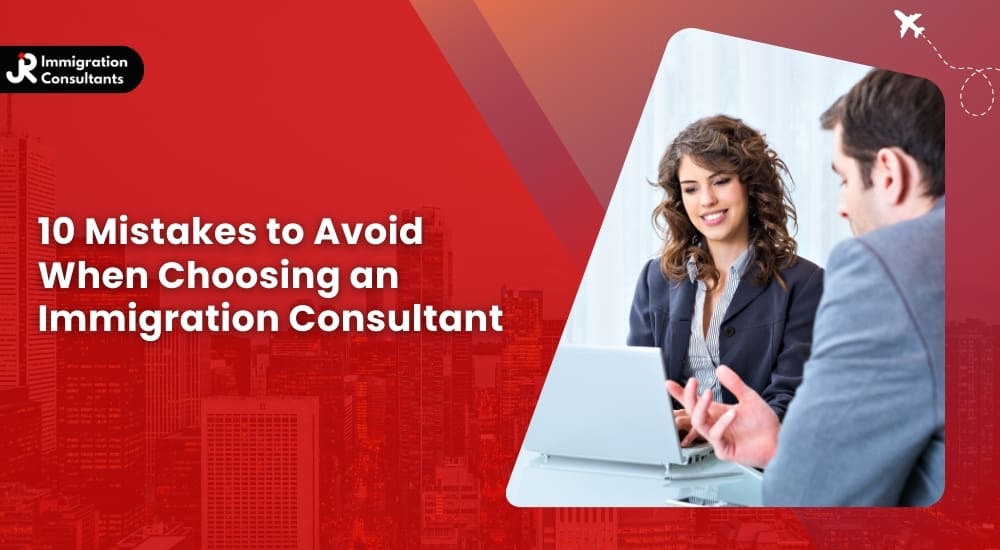It can be thrilling to plan a vacation to the US, but securing a visa does come with its own challenges. Many vacationers make small mistakes that cause extra waiting or, even worse, rejection. A B2 visa is for short trips. It’s primarily for sightseeing, family visits, or event attendance. The US Consulate conducts a thorough examination of every application. Even small mistakes can make them doubt the trip’s genuineness. Be prepared, follow the procedures, and avoid tempting shortcuts.
In this blog, we’ll discuss common mistakes made when filling out a U.S. tourist visa application from India. We will provide practical advice, clear steps, and helpful templates. You will learn to prepare your paperwork and handle your visa interview with assurance. Are you looking for Visa Assistance in Bangalore?
Mistakes to Avoid During a US Tourist Visa Application
The reasons behind a rejected US tourist visa are often less complex than people imagine. Most people who are ineligible make simple, avoidable mistakes. We’ll cover common mistakes in the application process. Here are some common mistakes to avoid:
Mistakes on the DS-160 form
The process of applying for a tourist visa requires you to complete the DS-160 online form.Many applicants make mistakes. They often enter their names, passport numbers, birth dates, and email.
addresses incorrectly. Enter your name and personal info just like it shows on your official documents. Your form must only include your official name because nicknames are not acceptable. The new rules say the DS-160 barcode must match the appointment info exactly. The new rules say the DS-160 barcode for booking must match the appointment info exactly.
Tips to Avoid DS-160 Mistakes
- Keep all your passport documents and associated paperwork present when completing the form. Be in a quiet place with few distractions when you fill out your application.
- Print out the confirmation page and save the application regularly.
- Verify all the spellings and numbers for any errors.
- Quickly fix any mistakes after you submit. Take official steps to refile or correct your DS-160 as soon as you can.
Missing or weak supporting documents
To apply, you’ll need documents that justify your return to India. People call the reason to return “ties to your home country.” These ties can be employers, family, schools, or property back home. Also, you should show:
- Bank statements or fixed deposit slips showing enough funds for the trip.
- Leave a letter from your employer or proof of business ownership.
- Travel itinerary and hotel bookings, if requested.
- Ensure you submit genuine documents.
- Any inconsistencies in your papers might cause the officer to deny the visa.
Conflicting or inconsistent answers
An officer may doubt your application if your DS-160 doesn’t match your interview or supporting documents. Some common examples include varying travel dates or different family details. The alignment between all documents needs to remain consistent at all times.
Brief checklist for consistency.
- You must maintain identical birth dates and passport numbers throughout all your documents.
- Ensure the job title and employer name are the same as on your appointment and salary slips.
Showing insufficient funds or an unclear funding plan
Provide access to travel funds. If you have a sponsor, remember to provide a letter from them and their financial documents. Bank statements should be recent; any large deposits need a sound explanation. Out of the blue, huge deposits without a clear source raise red flags.
What to prepare
- Bank statements for three to six months.
- Income tax returns, salary slips (if available).
- Include the sponsor letter and their bank statements if someone sponsors your trip.
Poor travel history or lack of previous travel
Not having a travel history doesn’t mean that authorities will refuse a visa. If a person hasn’t traveled abroad, the visa officer might ask more questions. This is to check the risk of overstaying a visa. Share past travel details along with the right stamps and visas. This helps gain the officer’s support.
How to deal with a bad travel history:
- Prove strong ties to India, such as a job, family, or property.
- Provide a definite travel itinerary with return tickets.
- Exhibit finances that sufficiently cover the travel expenses.
- List all past trips within the country or to nearby countries.
- Include short-term foreign travel.
- This helps to show compliance with travel rules.
Not scheduling or missing biometrics and appointment rules
In India, all US visa applicants must complete biometric enrollment before their interview. This procedure includes taking fingerprints and a photograph at the Visa Application Centre. Not booking the appointment correctly or missing it can delay or cancel interviews. This step is often missed and not well documented in the application cycle.
Steps To Avoid This Mistake:
- Secure your biometrics appointment immediately after booking your interview.
- Be punctual at the Visa Application Center to prevent any need for rescheduling.
- Verify the official instructions for your city’s VAC well in advance of the appointment.
Using the wrong visa category
Applicants often blunder in selecting the correct visa. For instance, the US has a distinct B-1 visa for business and a B-2 for tourism, along with the combined B-1/B-2 for both. Taking any other approach can lead to a perception that the matter of travel is dubious. This is a surefire way to invite a delay or, worse, a rejection.
To sidestep this error:
- Ensure you understand the purpose of each visa category before attempting the DS-160.
- Use B2 if your travel is strictly for leisure, social visits, or medical care.
- Use B1 for any meetings, conferences, or other business functions.
- If your travel is a mix of leisure and business, use B1/B2.
- Do not combine purposes or provide incorrect details; it leads to unnecessary complications.
Conclusion
Getting a U.S. tourist visa from India needs careful attention to all application details. The complete process demands your focused attention throughout every step. Our investigation focused on the common errors that applicants tend to make. These errors raise doubts for the visa officer and lower your chances of approval. Being truthful stands as the most important step to prevent issues from occurring. Submit documentation in enough quantity. Show financial stability.
Also, gather all needed documents before you start the application process. Include a complete itinerary, proof of steady finances, and clear reasons for returning home in your application. To make your U.S. travel dreams come true, follow these three key steps—prepare well, be honest, and have self-confidence—as advised by JR Immigration Consultants.
Frequently Asked Questions
Is having an extensive list of past travels essential for receiving a US tourist visa?
The requirement for travel history does not exist. When you lack international travel experience, you must prove your strong connections to India through your employment, family, and property ownership.
Do applicants need to submit bank statements when applying for a US tourist visa?
The absence of bank statements does not prevent you from applying, but they serve as important documentation to prove your financial ability for the trip. The lack of bank statements creates significant weak points in your application.
Is the wrong choice of visa category a significant error?
A wrong visa category choice creates major problems because it confuses the officer and possibly results in a rejection. Every visa category must match the specific purpose of the visit.
Is it possible to apply for a US tourist visa without bank statements?
Submitting bank statements stands as a strong recommendation. Your bank statements demonstrate enough funds for your trip and prove you do not intend to stay in the US for employment.




